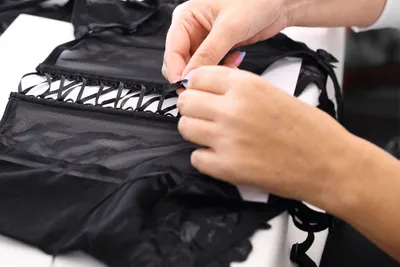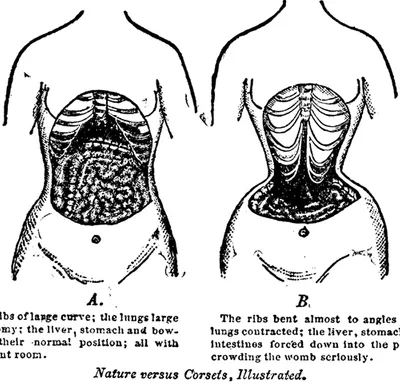If you follow celebrity news at all, you’ve likely caught sight of a certain Kim Kardashian selfie that’s getting buzz. No she’s not wearing another see-through frock to an awards show. This photo was snapped of Kim at the gym with a horribly uncomfortable neoprene band, resembling a corset, synched around her waist. As she explains, she’s just really into waist training. Why are celebs like Kim, Jessica Alba, Khloe Kardashian, and Brooke Burke-Charvet swearing by the “modern day corset” for re-sculpting the waist? And more importantly, is waist training safe?
According to medical experts, no, waist compression isn’t safe, and here’s why…
1. What is the Point of Waist Training?
The so-called waist-trimming technique outfits a tight-fitting band around the midsection for lengthy periods (I’m talking hours at a time). The point it to apparently compress the core and trick your waist into reshaping itself to Barbie-esque, hourglass proportions.
Folks who are unfamiliar with waist training may be scratching their heads—or clutching at their abdomens—at the thought of such a barbaric fitness fad. For those of us who cringe at the thought of wearing too tight skinny jeans or Spanx, you’re not too far off.
2. The Waist Training Myth
Proponents of waist training buy into the fact that the syncher will cause a lot of perspiration. And in theory, a lot of sweating is believed to virtually melt fat from your waistline, right?
Not quite, according to researchers at Yale School of Medicine. Sure, wearing a tight-fitting garment may result in a lot of sweating, but it won’t cause your midsection to reshape permanently. Instead, waist training will likely lead to dehydration.
3. The Many Dangers of Waist Trainers
Most of us don’t require medical degrees to doubt that synching your waist to uncomfortable proportions will actually cause shrinkage. And medical experts agree that it not only sounds dubious—the practice is downright dangerous.
According to Dr. John Kuemmerie, professor of Internal Medicine, Gastroenterology, at Virginia Commonwealth University, School of Medicine, waist training can cause serious bodily harm. Binding the midsection is not only terribly uncomfortable—it also restricts breathing and natural movement. Compression can even cause heartburn, acid reflux, and provoke erosive esophagitis; as well as cause damage to ribs and organs (stomach and colon).
4. Spanx for a Quick Fix
Waist training may not cause permanent results—when you remove your syncher your waist will realistically go back to normal. However, as far as temporary slimming, say for a night out on the town or your wedding, it offers a temporary quick fix.
In fact, medical professors at Boston University School of Medicine claim that waist slimming accessories, like corsets and Spanx can boost confidence and even motivate the wearer to start exercising regularly if they like the results.
5. Long Term Muscular Decline
That slimmer look achieved from waist trainers is all fine and dandy for a quick slim down for an evening. However, Richard Cotton, an Exercise Physiologist at the American College of Sports Medicine, in Indianapolis, claims that longer-term usage can actually diminish core strength.
According to Cotton, “[Waist trainers may] provide support for the core, but if you wearing them constantly can decrease core strength…due to lack of muscular stimulation.”
6. Risk of Infection
Bacterial growth is rampant with any garment that traps sweat and moisture underneath. Medical experts point to several yeast and bacterial infections—including folliculitis, which results from bacteria trapped in hair follicles.
Not to put you off your lunch, but folliculitis causes a bacterial infection marked by red, pussy pimples. You’ll need a round of antibiotics to ward off the infection.
7. Development of Blood Clots
If you are the type of person who has to unbutton your pants after a huge meal—you can imagine the amount of compression and nerve pain a waist trainer places on the lower half of your body.
Dr. Karen Erickson, a New York-based Chiropractor, says that waist synching can compress the peripheral nerve in your thigh. This compression over the long term can cause decreased blood circulation, tingling and numbness in the legs and thighs, the development of varicose veins and even blood clots.
8. Waist Train Naturally with Diet and Exercise
Obviously waist training is just another fad that has some pretty dangerous consequences. While there’s no way to change the physical bone structure of your body to Barbie-like proportions, you can reshape your waist with exercise and diet.
Healthy eating and regular, daily exercise made up of resistance training, high intensity interval training, and exercises that incorporate the core group of muscles (i.e., planks) can help trim and tone the midsection.











